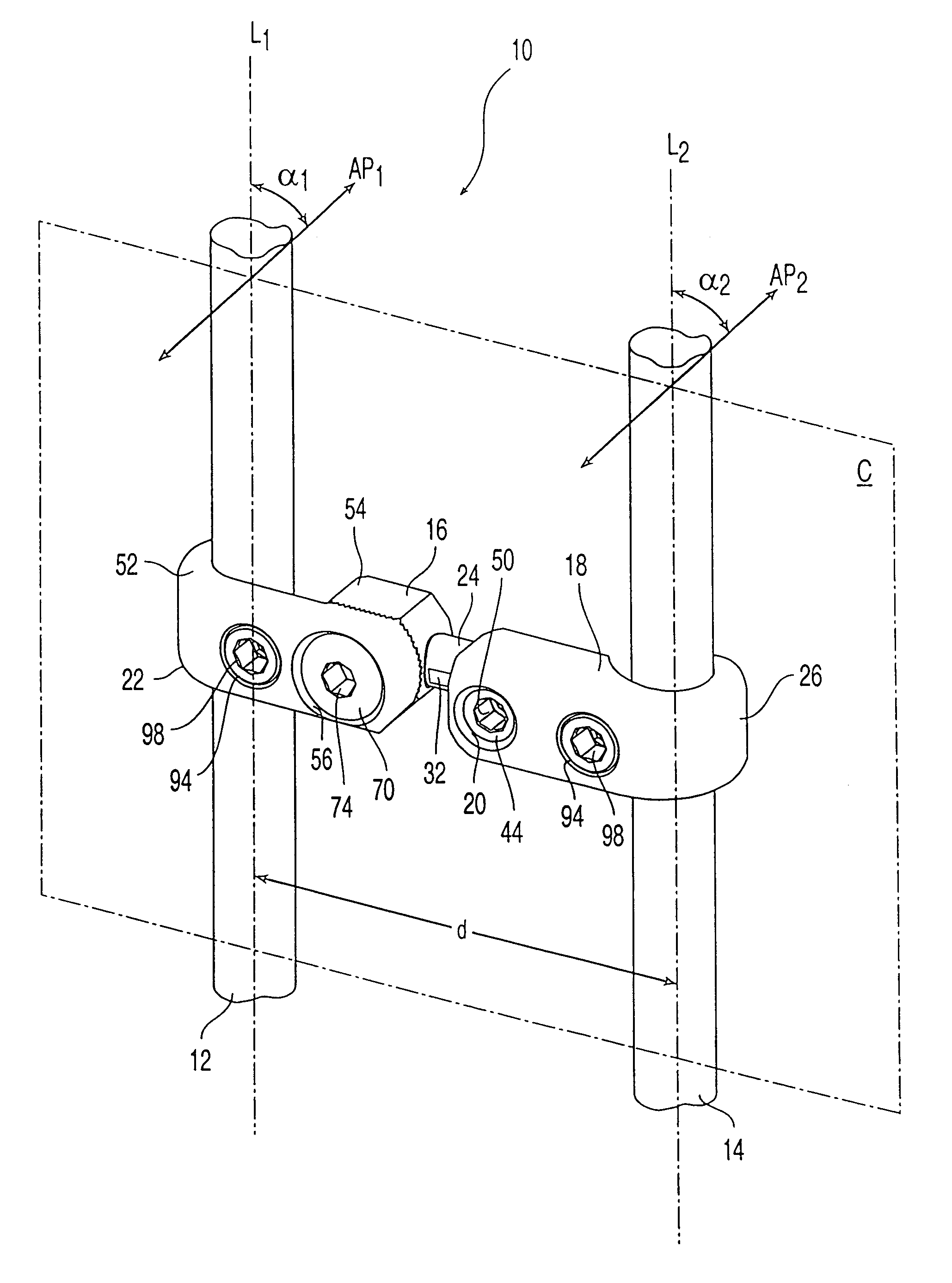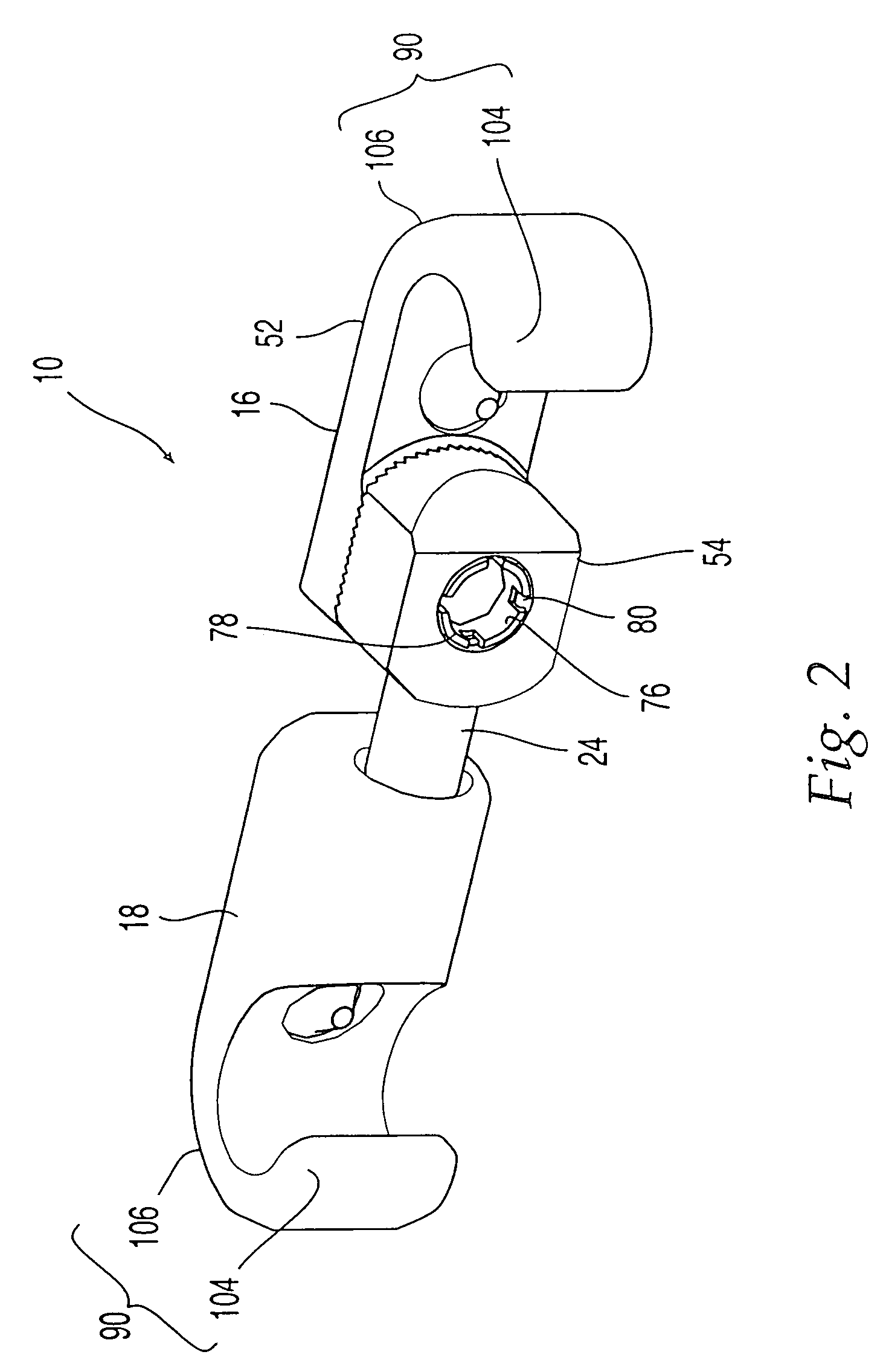Transconnector for coupling spinal rods
a technology of connecting rods and spinal cords, applied in the field of connecting rods, can solve the problems of bending in either of the rods, adversely affecting the fixation of the spine, clinical outcome, and bending can also adversely affect the mechanical properties of the rods, and achieve the effect of preventing uncoupling
- Summary
- Abstract
- Description
- Claims
- Application Information
AI Technical Summary
Benefits of technology
Problems solved by technology
Method used
Image
Examples
Embodiment Construction
[0025]FIG. 1 shows a transconnector 10 according to the present invention for coupling a first elongate spinal fixation element 12 to a second elongate spinal fixation element 14. Transconnector 10 can be made of any suitable material typically used in orthopaedic applications such as titanium, titanium alloy, or stainless steel. If transconnector 10 is made of a metallic material, preferably it is the same metallic material used for fixation elements 12, 14 to avoid galvanic (mixed-metal) corrosion. First and second fixation elements 12, 14 can be cylindrical rods, rectangular bars, plates, or any other device suitable for spinal fusion. In use, first fixation element 12 extends along one side of the vertebral column and second fixation element 14 extends along the other side of the vertebral column. A wide variety of attachment devices such as hooks, screws, and clamps, can be used to attach first and second fixation elements 12, 14 to the spine.
[0026]Transconnector 10 includes a ...
PUM
 Login to View More
Login to View More Abstract
Description
Claims
Application Information
 Login to View More
Login to View More - R&D
- Intellectual Property
- Life Sciences
- Materials
- Tech Scout
- Unparalleled Data Quality
- Higher Quality Content
- 60% Fewer Hallucinations
Browse by: Latest US Patents, China's latest patents, Technical Efficacy Thesaurus, Application Domain, Technology Topic, Popular Technical Reports.
© 2025 PatSnap. All rights reserved.Legal|Privacy policy|Modern Slavery Act Transparency Statement|Sitemap|About US| Contact US: help@patsnap.com



